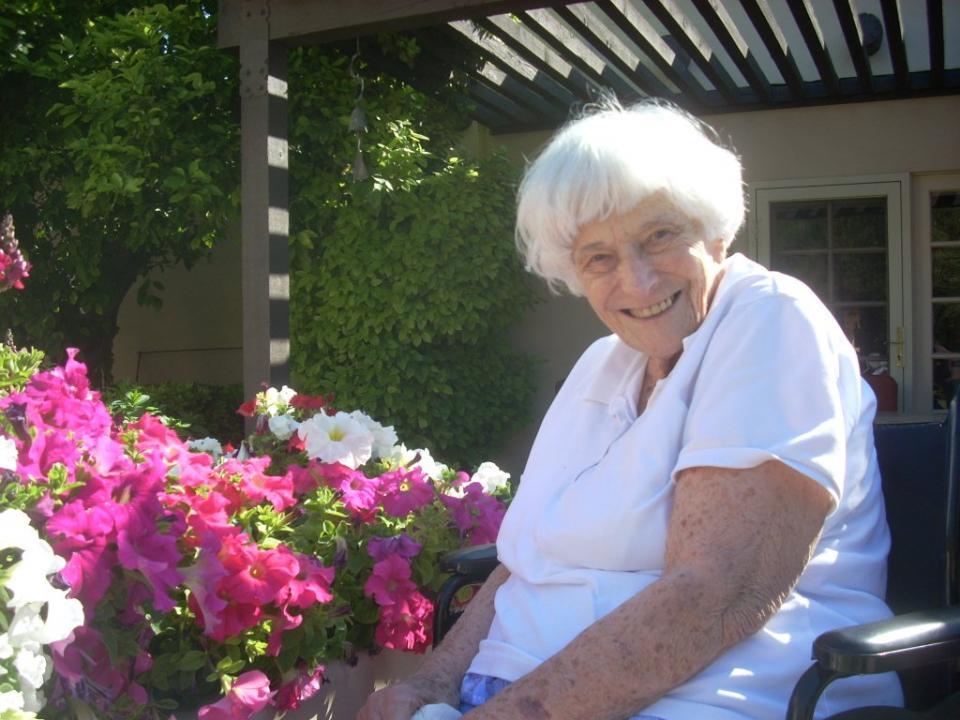In Her Own Words: A Portrait of Maxine Marshall
Encouraging Maxine Marshall to talk about her many contributions to making “this corner of our world a better place,” as her late husband, the publisher and environmentalist Jonathan Marshall, put it in a 2003 interview with The Phoenix Jewish News, is a challenge! Maxine is as modest as she is generous-hearted. “I’ve lived a charmed life,” she says simply. “Jonathan and I were determined do good in the world.”
In the ten years I have been in the Department of English and the Creative Writing Program as the Maxine and Jonathan Marshall Chair in Modern and Contemporary Poetry, I came to know Jonathan’s impressive record, but not Maxine’s. In 2008, when English sponsored a book party for Jonathan’s newly published memoir, "Dateline History: The Life of Journalist Jonathan Marshall," a testament to his remarkable life, many in the audience stepped up after the reading to offer heartfelt remarks about Jonathan’s contribution as the Scottsdale Daily Progress publisher, and as a philanthropist and civic activist in the Valley for over forty years. What I realized in time, well-known though the facts were, was that Maxine was right there by Jonathan’s side, effectively as co-publisher and co-editor of the "Scottsdale Daily Progress" from 1963-1987. At the same time, she served on the board of the Arizona Center for Law in the Public Interest, and was a member of many advisory councils over the years, including the Advisory Council to the Area Agency on Aging and the Pritzlaff Commission on Long Term Care for Arizona. After the Marshalls sold the Scottsdale Daily Progress in 1987, Maxine also oversaw all proposals for funding to The Marshall Fund of Arizona.
When I ask about her work on the Progress, Maxine exclaims, “I had always been a writer. Writing was something I loved doing, and here was the chance to do it as a profession!” As Carol Hughes has written, in a thorough chapter on Maxine’s history and contribution included in "Skirting Traditions: Arizona Women Writers and Journalists 1912-2012" (Arizona Press Women, 2012), Maxine became known as someone who “wrote often about issues related to women, children, and seniors.” She and Jonathan shared a commitment to “journalism advocacy,” as Hughes has termed it. Maxine’s columns advocated progressive causes she felt warranted the public’s attention. When Maxine started the Saturday Magazine edition—Sat Mag for short—she wanted, as she describes it, to treat “important subjects that wouldn’t normally get coverage because they weren’t news.” The first issue featured Bruce Babbitt and his wife on the cover, and the lead story was Governor Babbitt’s plan to create a preventive health care program for indigent children. “I modeled Sat Mag,” Maxine adds, almost shyly, “after the New York Times Magazine, because I wanted Sat Mag to be of a distinctive quality. I aimed high.”
By all accounts, her aim was true. Maxine envisioned Sat Mag as a literary, cultural, and news magazine that could cross the usually discrete town-gown divides. And so, among scholars, scientists, politicians, and cultural thinkers, Sat Mag welcomed early works by such prominent ASU writers as Tobias Wolff, Alberto Ríos, and Rita Dove.
There were some challenges for women in journalism at the time, Maxine acknowledges. The Progress gave her the opportunity to give other women a professional start, as well as to attract talented new women in the field. One of those women was Karla Payne Elling, ASU English department alumna (PhD 1975) and Manager of the Creative Writing Program at ASU (emerita). As Maxine recounts, she was sitting at her desk in the Sat Mag division when “an apparition ran in, dropped off a resume and writing sample, and ran out.” Maxine was intrigued, read the sample, and followed up by calling Karla and offering to publish the piece. “She was a wonderful writer, and I was excited to publish her,” Maxine quietly notes.
That offer was, many years later, serendipitous for the Department of English. When Maxine and Jonathan wanted to honor the literary arts in some way that would have both pedagogical and artistic impact over the years, they called Karla. Thus began the earliest discussions of what would eventually become the Marshall Chair in Poetry. Why poetry? I wonder aloud. “The poetry chair was really her idea,” writes older son, Robert Marshall. Maxine was a naturally avid reader and writer from an early age. While her children were still at home, she managed to advance her liberal arts education, finally completing her degree here at ASU, including courses in the English department. “I always loved the power and beauty of the written word. Jonathan and I envisioned a poet teaching students to love poetry’s power and beauty as we did,” she states.
That inspiring and timely notion of giving forward—Emily Dickinson called it “dowering,” the gift without conditions—surely characterizes Maxine and her beloved husband, Jonathan, in all they did and gave “in this corner of our world.”
Photo courtesy Maxine Marshall.
Header image: Carnations (Dianthus caryophyllus) background image from the Gottorfer Codex (1649-1659) / Wikimedia Commons.


